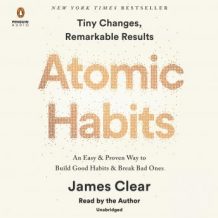The Economics of Higher Purpose: Eight Counterintuitive Steps for Creating a Purpose-Driven Organization Audiobook
The Economics of Higher Purpose: Eight Counterintuitive Steps for Creating a Purpose-Driven Organization Audiobook
- Wayne Shepherd
- Berrett-Koehler Publishers
- 2019-08-20
- 6 h 29 min
Summary:
Two distinguished scholars offer eight steps to help organizations discover and embrace a geniune higher purpose—something that will dramatically improve every aspect of any enterprise, like the bottom line.
What does a lofty notion like purpose want to do with business basics like the important thing? Robert E. Quinn and Anjan J. Thakor state pretty much everything. Leaders and managers are trained that workers are self-interested and function resistant, therefore they create systems of control to about The Economics of Higher Purpose: Eight Counterintuitive Guidelines for Creating a Purpose-Driven Firm combat these objectives. Workers resent these systems, and functionality suffers. To address the performance issues, managers double down on the coercion, creating a vicious routine and a self-fulfilling prophecy.
But there’s a better way. Quinn and Thakor show that when an authentic higher purpose permeates business technique and decision-making, the cycle is broken. Companies and employees observe themselves as working jointly toward an inspiring goal, not just trying going to quarterly targets. They fully indulge, become proactive contributors, and, ironically, very easily exceed those quarterly targets.
Based on their widely acclaimed Harvard Business Examine content, Quinn and Thakor provide eight sometimes amazing steps for shifting from a transaction-oriented mind-set centered on constraints to a purpose-oriented mind-set centered on possibility. This iconoclastic reserve can help any firm discover its authentic purpose and weave it in to the fabric of everything it does, leading to unparalleled degrees of personal satisfaction, program and product creativity, and economic development.






